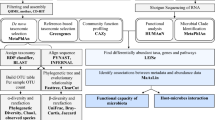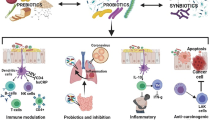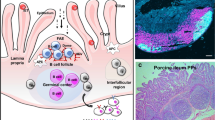Abstract
The intestinal microflora can be considered as a postnatally aquired organ composed of a large diversity of bacterial cells that can perform different functions for the host. This organ is highly exposed to environmental influences and thus modulated in its composition and functions by external factors, such as nutrition. Specific components of the intestinal microflora, including lactobacilli and bifidobacteria, have been associated with beneficial effects on the host, such as promotion of gut maturation and integrity, antagonisms against pathogens and immune modulation. In addition, the microflora seem to play a significant role in the maintenance of intestinal immune homeostasis and prevention of inflammation. At the present time, the contribution of intestinal epithlial cell in the first line of defence against pathogenic bacteria and microbial antigens has been recognized, in contrast, the interactions of intestinal epithelial cells with commensal bacteria are less understood. The present work summarizes the increasing scientific attention for mechanisms of the innate immune response of the host to different components of the autochthonous microflora and suggests a potential role for selected probiotic bacteria in the regulation of intestinal inflammation.
Similar content being viewed by others
Author information
Authors and Affiliations
Corresponding author
Rights and permissions
About this article
Cite this article
Schiffrin, E., Blum, S. Interactions between the microbiota and the intestinal mucosa. Eur J Clin Nutr 56 (Suppl 3), S60–S64 (2002). https://doi.org/10.1038/sj.ejcn.1601489
Published:
Issue Date:
DOI: https://doi.org/10.1038/sj.ejcn.1601489
- Springer Nature Limited
Keywords
This article is cited by
-
Effects of probiotics on pancreatic inflammation and intestinal integrity in mice with acute pancreatitis
BMC Complementary Medicine and Therapies (2023)
-
Probiotics as the live microscopic fighters against Helicobacter pylori gastric infections
BMC Gastroenterology (2021)
-
Fecal bacteria and metabolite responses to dietary lysozyme in a sow model from late gestation until lactation
Scientific Reports (2020)
-
The chemokine CXCL9 exacerbates chemotherapy-induced acute intestinal damage through inhibition of mucosal restitution
Journal of Cancer Research and Clinical Oncology (2015)
-
Lactobacillus crispatus L1: high cell density cultivation and exopolysaccharide structure characterization to highlight potentially beneficial effects against vaginal pathogens
BMC Microbiology (2014)




